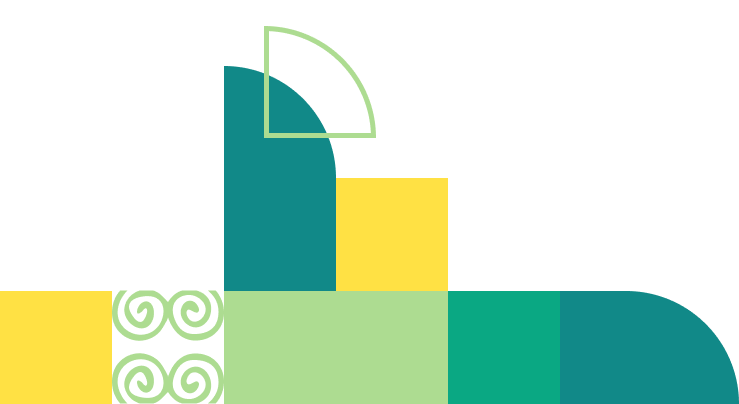1 December 2017
Re-imagining resilient water-wise cities in Africa
Placing water at the centre of city development and resilience strategies By Kobie Brand, Director: ICLEI Africa




To put this in context, sub-Sahara Africa has the largest number of water-stressed countries of any region (1), with only 9% of global fresh water resources being located in Africa (2). In addition, a report from the World Bank shows that in Africa, water demand is increasing at a higher rate than population growth (3).
If we look at service delivery, figures show that nearly half of all people using unimproved drinking water sources live in sub-Sahara Africa (4), and that around 70% of people in this region do not have toilets (5). Coupled with this, cities in Africa need to plan for increasing populations (the continent’s population is expected to double by 2050 (6)), rapid urbanisation and the rising demand for more infrastructure. In fact, it is estimated that roughly half of the urban infrastructure needed to supply the infrastructure needs of Africa’s cities by 2035 has yet to be built (7).
Superimposed on these existing scarcities and supply challenges, are the impacts of climate variability and climate change. Our weather patterns are becoming less predictable, with greater variability in precipitation and more extreme weather events. There is growing realisation that the impacts of climate change in Africa will be experienced through floods, droughts and extreme weather events, with very direct and potentially severe socio-economic impacts. This is translating into recognition that cities need to adopt integrated and innovative water management strategies. As a result, it is vitally important that the design of infrastructure, and the daily operations and long term planning of cities and water utilities, take climate change into account.
Access to water and well-maintained, adequate infrastructure and institutional capacity to provide it with, are not in place for large parts of Africa. The combined impact of climate change and associated water availability makes our region one of the most vulnerable. Given the added lack of reliable data, especially at the city and local level across our continent, it is not easy for city leaders to make informed decisions to address climate change. While all of this presents a major challenge for our cities it also presents a unique opportunity.

It is in this context that some of the cities best prepared for these changes are the ones who follow precautionary or no-regrets approaches. They do at least these five things:
- They lead their city administrations well, driving change and innovation, connecting with other forward-thinking city leaders around the world, understanding that cities are powerful incubators and drivers for change, that cities are where development solutions will need to be found and implemented, fast and at unprecedented scale;
- They plan and prepare, unpacking and understanding their risks – locally – including those related to water, food, climate, natural resources and the links these have with each other and with urbanisation, their economic future and their well-being;
- They include communities and partners in mapping and planning their cities so that they can move away from further informal, unplanned development and decouple water use from their local growth and development strategies;
- They develop robust and integrated city development plans with their communities, sharing a vision for a sustainable future which addresses not only short term gains, but long term determination to provide a better urban future which leaves no-one behind; and
- They put water management on the central stage of this planning, understanding that managing water in and for our cities will greatly contribute to the achievement (or not) of the SDGs in 2030, and will be essential for our very survival.
Most reports, including the well-respected High and Dry report issued by the World Bank Group (8) last year, site numerous ways in which cities – large and small – can act to connect water and climate resilience for a more water secure future.
While we need many more practical solutions to waterproof our cities, from both flooding and drought, we also need more water! And we need to get that water to our communities, effectively and reliably, now and in the future. So, infrastructure is key. But cities can act in many other ways too:
- They can partner with their universities and others to build new technical capacity, and they can invest in well qualified and experienced water engineers and multidisciplinary planning teams.
- By simply fixing leaks in urban supply systems, we can save 32 billion cubic metres of treated water every year (9)!
- Arguably, the most low-hanging fruit and an essential approach for the future for any medium to large city in Africa, is the re-use of water. In cities, there are many emerging technologies to recycle wastewater effectively.
- Desalination, while potentially holding enormous opportunity for fast growing coastal cities, is still very expensive, and we have a lot to learn about potential adverse effects on fisheries and other marine resources. However some cities, like Cape Town, are already pioneering these options.
- We will see more dams and other large infrastructure to store water better around our cities, but we should also consider the wide range of nature-based solutions, such as healthy wetlands and river systems – also in and around our cities – to provide us with water. This can be done at a fraction of the cost to build dams. Many cities in Africa, such as Lilongwe, Tshwane, Addis Ababa, Lusaka and others are already taking bold leadership in this regard.
- Cities can also help drive an essential global shift in the way we regard water. It is a very scarce resource and needs to be valued and priced correctly otherwise the demand will simply keep growing. This is hard for cities to achieve, given poverty and access issues as we have in Africa, but it is effectively used in many of our bigger cities where the urban poor are accommodated through free or reduced allocations. Building water markets certainly has the potential in some cases to help with water proofing our cities through dry spells.
- In Africa, under-collection of water bills has been estimated at US$500 million per year (10). Improving the collection rate of water bills is an obvious way of increasing water revenues without raising tariffs.
- We can work with partners and our networks to bring food production closer to cities, promote consumption of new and water-wise crops, and improve urban-rural linkages – particularly when it comes to food production and supply – which can dramatically improve efficiencies, including water usage.
- Cities can also invest in improved census and data systems, and improve community connectivity and outreach, linking communities to early warning systems to allow them to evacuate safely and efficiently in the wake of flooding and other water and climate change-related events
- And finally, more African cities can add their names to those cities who have already joined each other and city networks, SALGA, ICLEI, C40 and UCLG-Africa, who all committed to take the Ekurhuleni Declaration on Water and Sanitation for Cities and its 10-point plan to the African Union and the United Nations, ready to take bold water and climate action – locally!
In March this year, we collectively hosted the 4th pan-African LoCS4Africa Congress which focused this year on Water Solutions for Cities. It was attended by more than 40 Mayors and Heads of Government and included city representatives from over 53 cities and 40 countries, totalling over 400 delegates.
One of the key outcomes of the Congress was the drafting and unanimous adoption of the Ekurhuleni Declaration on Water and Sanitation for Cities by city leaders. Focused on water solutions for Africa’s cities and towns, the Congress recognised that the challenges we face are complex and inter-connected. And that they require locally relevant, real time and context-specific solutions for our urban communities in ways that address social ills, poverty, job creation, youth unemployment, gender and community wellbeing.
Cities across Africa can make a choice to develop smartly, to harness innate innovation and to turn water challenges into water opportunities. With home-grown, local solutions and leapfrogged technology, they can indeed become the world’s leading water-wise and climate resilient urban hubs. Of all our natural resources, water underpins sustainable development as perhaps none other. If we re-imagine how we view water in our cities and consider it as a precious commodity, as a life-giving resource and not merely a service to be delivered, we can re-engineer the way we manage water in our cities.
- www.un.org/waterforlifedecade/scarcity.shtml
- Tran,M., Koncagul, E., and Connor, R., 2016. The United Nations World Water Development Report 2016: Water and Jobs. Facts and Figures. Available at: unesdoc.unesco.org/images/0024/002440/244041e.pdf
- Jacobsen, M., Webster, M., & Vairavamoorthy, K., 2013. The Future of Water in African Cities: Why Waste Water?. Directions in development; environment and sustainable development. Washington, DC: World Bank. Available at: https://openknowledge.worldbank.org/handle/10986/11964
- UNICEF and World Health Organization. 2015. Progress on sanitation and drinking water – 2015 update and MDG assessment. Available at: files.unicef.org/publications/files/Progress_on_Sanitation_and_Drinking_Water_2015_Update_.pdf
- WaterAid. 2015. It’s No Joke: The State of the World’s Toilets 2015. Available at: www.wateraid.org/~/media/Publications/Its_No_Joke_2015_the_state_of_the_worlds_toilets.pdf
- www.prb.org/Publications/DataSheets/2016/2016-world-population-data-sheet.aspx
- UNWater. 2017. The United Nations Water Development Report 2017: Facts and Figures. Wastewater the Untapped Resource. Available at: unesdoc.unesco.org/images/0024/002475/247553e.pdf
- World Bank. 2016. “High and Dry: Climate Change, Water, and the Economy.” World Bank, Washington, DC. License: Creative Commons Attribution CC BY 3.0 IGO. Available at: https://openknowledge.worldbank.org/bitstream/handle/10986/23665/K8517.pdf?sequence=3&isAllowed=y
- Kingdom, B., Liemberger, R. and Marin, P. 2006. The Challenge of Reducing Non-Revenue Water (NRW) in Developing Countries. How the Private Sector Can Help: A Look at Performance-Based Service Contracting. Water Supply and Sanitation Sector Board Discussion Paper Series Paper No.8. The World Bank, Washington, DC. Available at: https://siteresources.worldbank.org/INTWSS/Resources/WSS8fin4.pdf
- United Nations World Water Assessment Programme. 2012. World Water Development Report 4: Managing Water under Uncertainty and Risk: Facts and Figures.


